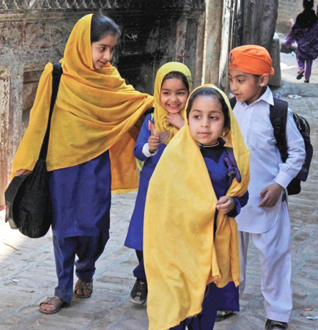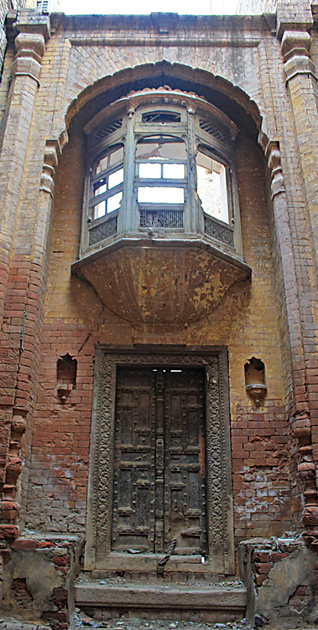People
A Hidden Gem Continues to Shine in the Heart of Peshawar
HIDAYAT KHAN
Peshawar, Pakistan
Mohallah Jogan Shah is one of the oldest abodes of Sikhs in Peshawar.
The locality, situated near Dabgari, is home to a historic gurdwara and its own community school, hidden amongst the surrounding lofty buildings.
“There are some 6,000 Sikhs that live in the mohallah,” says 50-year-old Pardeep Singh. “This is the area where our ancestors lived and we have maintained our culture, traditions and our own educational system,” added the Sardar proudly.
Bhai Joga Singh Khalsa Dharmic School and Guru Angad Khalsa Dharmic School both impart religious as well as secular education, with a deep focus on Sikh culture, said Pardeep.
The oldest houses run alongside the narrow but well-paved and seemingly endless maze of streets. The locality is circumscribed by several gates on all sides, making it perhaps the only gated community of the city.
A majestic symbol of Sikh architecture, the centuries-old Gurdwara Jogan Shah is located in the midst of Peshawar and is one of the two gurdwaras in the city.
The spacious three-storey structure is beautifully inlaid with mirror work and is visited twice a day by local residents for sangat (literally, to ‘congregate‘) – a service where people gather to recite verses from the Guru Granth Sahib.
Due to the deteriorating law and order situation, however, another wall has been raised around the building with vigilant police personnel standing on guard around the clock.
“Our gurdwara has been constructed in honour of Bhai Joga Singh, who was venerated in Peshawar, not only amongst Sikhs, but Pukhtuns as well,” says a local elder, Ameer Singh. “There used to be a fair held near the gurdwara every year; however, it has been stopped due to the security situation of the city,” he added nostalgically.
S M Jaffar in his book, “Peshawar: City on the Frontier“, writes that the gurdwara was known as the dharamshala of Joga Shah, erroneously describing him as a ‘Hindu fakir“. He terms it as one of the most efficiently kept institutions of Sikhs in Peshawar, and states that it can easily accommodate about two thousand persons at a time.
Besides various folk tales associated with Bhai Joga Singh, locals believe a spring used to run through the locality, which was also named after him. This spring – no longer in existence – was said to be famous throughout the Peshawar Valley for its miraculous healing powers and was visited by pilgrims from far and wide.
Several magnificent structures were erected during the Sikh rule of the city from 1823 to 1848 -- as part of Ranjit Singh‘s great Sikh Empire.
While certain buildings, like Gurdwara Jogan Shah are well-kept, there are many others in dilapidated condition. The Sikhs of Peshawar say they do their best to keep their heritage alive, however, once an old building collapses it is near impossible to restore it to its original form.
[Courtesy: The Express Tribune. Edited for sikhchic.com]
April 1, 2014
Conversation about this article
1: Abhyjot Kaur (Ludhiana, Punjab), April 02, 2014, 10:00 AM.
Glad to know that such places exist even now. Thanks for the information.
2: Rup Singh (Canada), April 02, 2014, 4:38 PM.
Grateful to Mr. Khan and sikhchic.com for this article. Short and yet very informative, wonderful writing skills. Amazing how Sikhs can hold on to their identity, values and way of life in the most adverse conditions, yet in Punjab where Sikhs are a majority, we see a decline.




